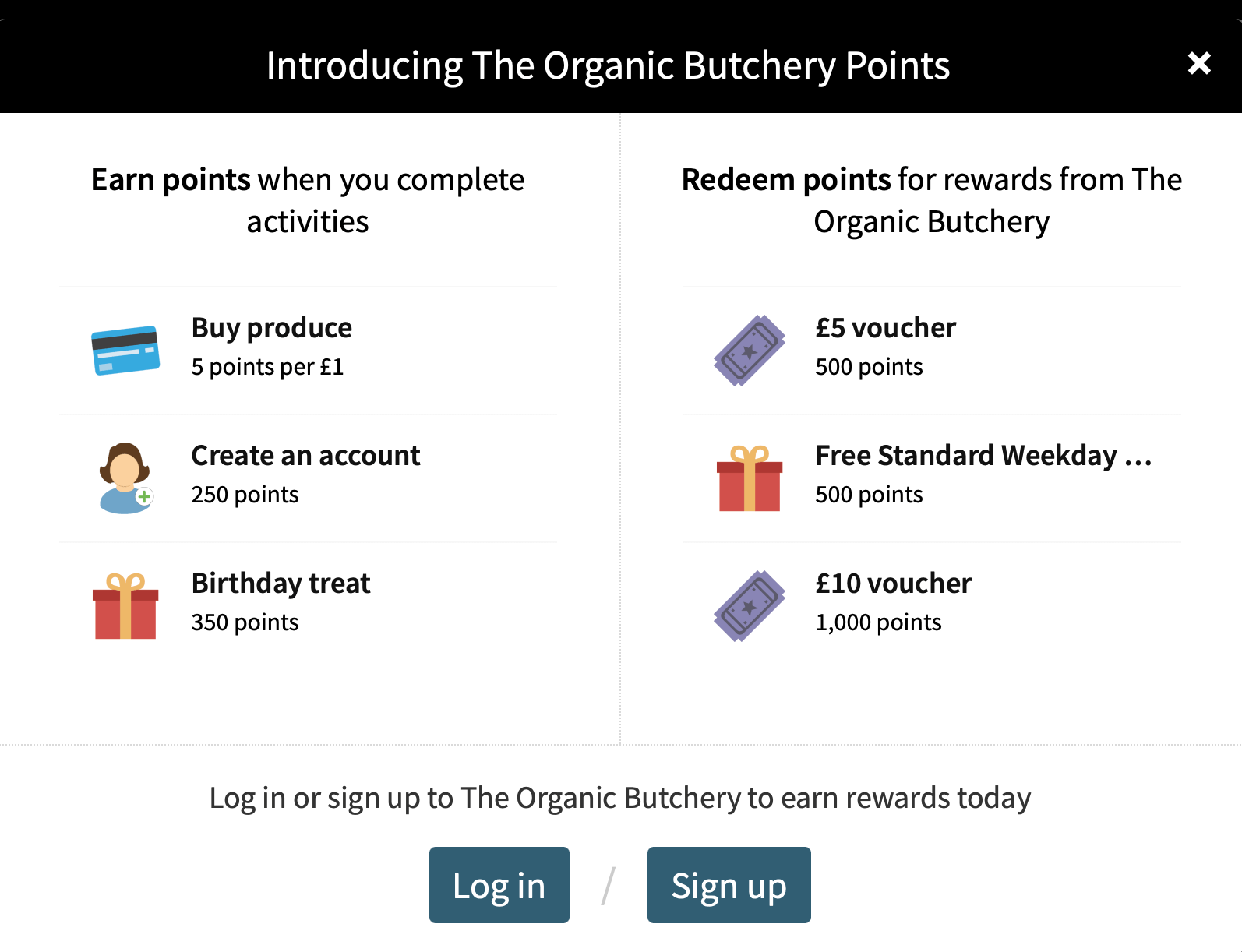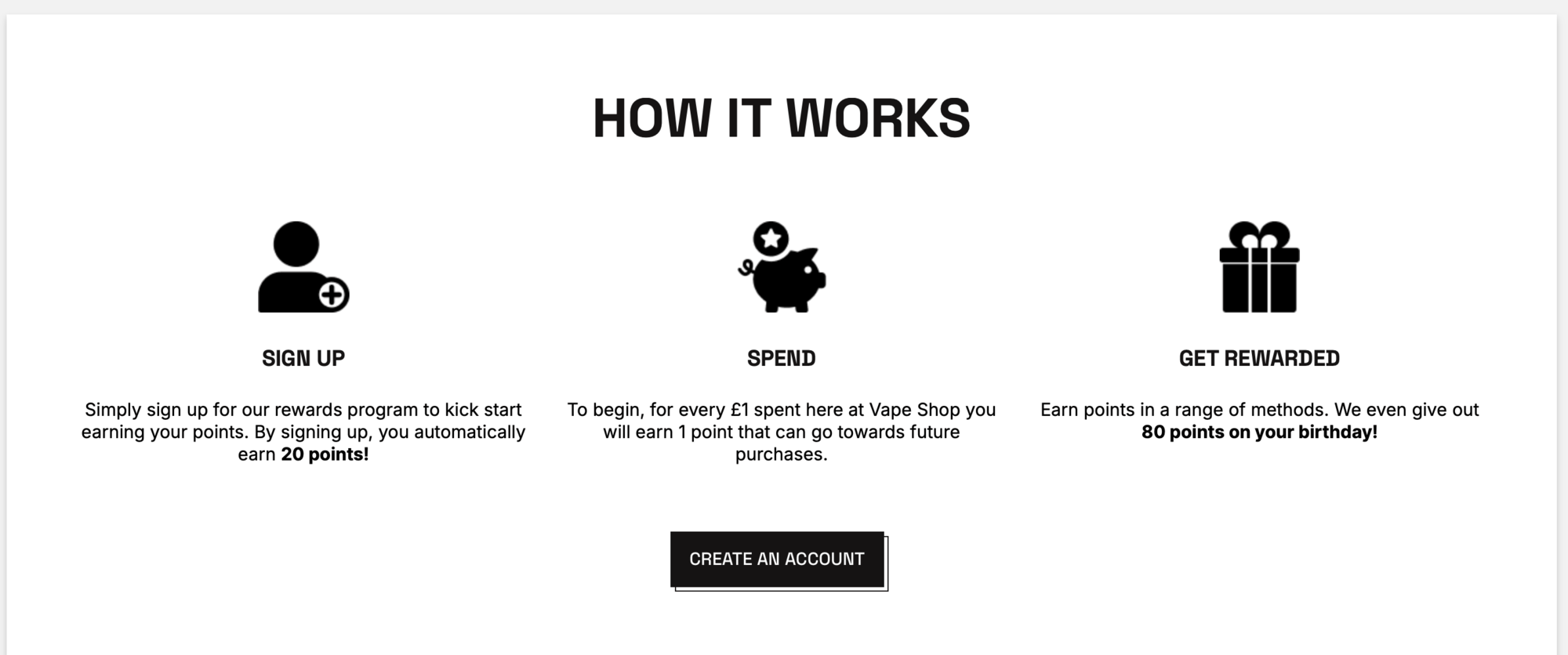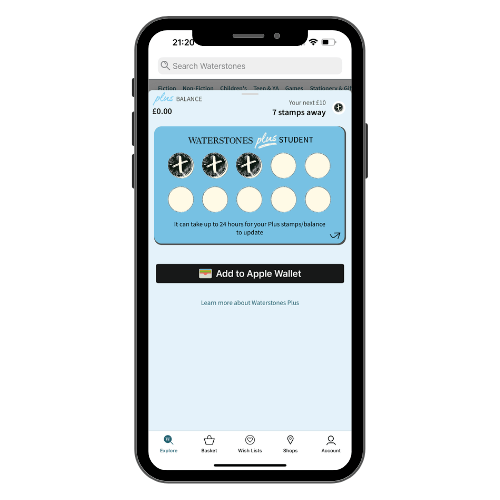Some of the earliest loyalty programs (before online shopping was a thing) were described as “earn-and-burn” programs—think of the physically stamped loyalty cards you’d get that eventually earned you a free product or a dollar amount off your next purchase.
Earn-and-burn loyalty programs are a mechanism businesses can use to reward customers with coupons or free products based on points accumulation; in other words, points = $.
However, even with more complex loyalty programs that reward customers based on relational rather than transactional behaviors, earn-and-burn loyalty programs can still be a reliable way to get your customer retention strategy off the ground.
The benefits of earn-and-burn loyalty programs
There are a few core benefits for businesses using earn-and-burn loyalty programs. Arguably, the two most important are how simple they are for customers to use and how simple they are for businesses to set up and maintain.
Simple for customers
Earn-and-burn programs are simple for customers because they always know exactly what their points are going to get them. They don’t have to remember that they have access to exclusive member club benefits, and most of the time, the program runs in the background without them even thinking about it.
The only time a customer interacts with the program itself is when they get a notification (typically an email) that they have a reward offer to redeem from their points.
Easy to set up
For businesses, earn-and-burn loyalty programs offer a simple set up process. With loyalty program software like LoyaltyLion, the most you’ll need to think about is the value of the points you’ll be offering and the reward thresholds you’ll want to have.
For example, customers spending $1 = 1 point, and offering a $5 coupon at 50 points or $10 coupon at 100 points.
This ‘formula’ is fairly typical for these types of programs, although you can try assigning other values to your points to experiment with what resonates most with your customers.
The drawbacks of earn-and-burn loyalty programs
Although earn-and-burn programs can be a great strategy for some businesses, there are a couple of drawbacks that make it worth considering other types of loyalty programs instead. The main cons are that these types of programs create a transactional relationship, and they don’t help develop deeper or emotional loyalty behaviors beyond purchases.
They create an inherently transactional relationship
Although the aim of the game is customer loyalty, earn-and-burn programs don’t do much to inspire such loyalty since the programs only reward purchases and nothing else. This means the relationship you’re building with the customer is purely transactional.
Transactional loyalty means that if a competitor comes along with similar products and price points, but offers a ‘better’ loyalty program (i.e., one that offers more than discounts), the customer will likely churn over to them.
It’s one of several types of customer loyalty — and among the least durable.
Doesn’t encourage loyalty behaviors beyond purchase
Since the relationship is transactional and only relies on rewarding purchases, customers don’t have any incentive to interact with your brand beyond those purchases.
Relational loyalty programs, such as tier-based programs, work to build emotional connections with customers because they reward interactions beyond purchases such as social media engagement, reviews, or participating in special programs (like Astrid & Miyu jewelry recycling program).
Examples of earn-and-burn loyalty programs
One of the best methods of understanding a concept is seeing a few real-world examples. So, we’ve put together a few case studies of earn-and-burn loyalty programs to help inform your decision of whether or not this is the right loyalty program strategy for you.
The Organic Butchery
The Organic Butchery, formerly known as Coombe Farm Organic, wanted to find a way to turn a sudden influx of new customers (from the switch to online shopping most of us made in 2020) into regular shoppers.
The solution was to create a one-to-one relationship by using LoyaltyLion’s API to create a loyalty program that customers automatically become members of when creating accounts, from which they earn 5 points per pound (£) spent.

By promoting the visibility of their program via the LoyaltyLion Mailchimp integration, they made sure customers were ready to start using the program, and the brand could segment future marketing campaigns with loyalty data.
Today, the program members generate 53% of the brand’s revenue.
The Vape Shop
This particular case is interesting because it’s not strictly an earn-and-burn program. The Vape Shop adopted LoyaltyLion early on in its journey, and created the program to incentivize loyal behavior.
What makes the program a little different from the regular earn-and-burn strategy is that they have a tiered-based program — but the tiers only change how many points you earn per £1 spent. It starts at 1 point per pound in the Bronze tier, 2 points per pound in the Silver tier, and 3 points per pound in the Gold tier.

This combination of a tier-based strategy and earn-and-burn made it so that The Vape Shop earned enough program-associated revenue to pay the annual cost of the loyalty program within 6 weeks of launch.
Waterstones Plus
With over 290 shopping locations (and online), Waterstones is one of Europe’s largest bookstore chains and its loyalty program, Waterstones Plus, is a very successful earn-and-burn program.
The program is essentially a digital stamp card, in which you earn a Plus stamp for every £10 a member spends in its shops, cafés, or its online store and members get £10 to spend for every 10 stamps.

In simpler terms, for every £100 a Plus member spends, they get £10 back. However, if the member is also a student, they get an additional 5% off of purchases.
The program has been around for several years, and the company saw its best revenue in over 10 years in 2023, at £452.48 billion.
Most supermarkets (e.g., Walmart, Tesco, 7-Eleven, etc.)
You’ll also find many grocery brands or supermarkets will have earn-and-burn programs, with Walmart perhaps being the most famous in the US, and Tesco’s Clubcard being a big name in the UK.
As with other brands, shoppers earn “points”, which typically have a cash value in the case of supermarkets, and customers can use those “cash pots” against purchases at the checkout.

Image source: Walmart
What makes supermarket earn-and-burn programs a little different, however, is that they often have the technology to offer granular “bonus points” for specific grocery or retail products.
How to structure your earn-and-burn loyalty program to make sure it’s profitable
The idea of earn-and-burn programs is that they’re so simple, a lot of your customers will use it — all it’s doing is providing points in return for money customers are already spending.
The question then, is how do you keep a program like this not only sustainable, but profitable?
First, is properly calculating your loyalty points value. While a high points value would be great for your customers, it’d be bad for business because you’ll sacrifice too much profitability.
As a rule of thumb, when starting out, we tend to recommend setting a maximum of 5% “return value”, for example:
Have your program set to give 5 points for every $1 spent and a $5 money-off reward that requires 500 points. In this scenario, customers need to spend $100 before getting $5 off.
However, as you can see in the examples, there are plenty of successful programs that offer up to 10% back ($10 for every $100 spent). The key here is balancing value for your customers and profitability for your business.
But there is another tactic you can use to maximize profitability — putting expiry dates on your points.
It’s extremely unlikely that you’ll have a 100% engagement rate with your loyalty program, so the few that don’t engage with it (and therefore lose points to expiry), tend to make up some of the profitability difference for those who do.
The most common approach to having expiry dates on your loyalty points is to give customers six months or a year to spend from the date they earn them. However, another approach, though less common, is to have points reset for every customer on a specific day of the year.
How earn-and-burn loyalty programs compare to other types
So, what if you have a small voice or sense that earn-and-burn loyalty programs might not be the right fit for your brand? Well, before you make your decision, it’s worth comparing them to other types of loyalty programs. That way, you’ll be informed of your options before committing to one type.
Value-based loyalty programs
Value-based programs are pretty similar to the earn-and-burn type, the only major difference is that members can earn points in a variety of ways, not just through purchases.
Some methods of earning points include following your brand on social media, referring friends and family, downloading your brand’s app, etc. A couple of examples of value-based programs include the LEGO Insiders program, and MoxieLash Insider.
The benefit of this approach is that customers have more opportunities to earn points that don’t involve spending money, and your brand can build stronger emotional relationships with customers.
Tiered loyalty programs
A tiered loyalty program is one that includes multiple “levels” of membership, where a member can “level-up” their loyalty tier the more they engage with your brand. The program starts with a basic tier, the one that every member starts on, and then each tier from that point on includes higher value rewards.
Most tiered programs have three tiers (think, bronze, silver, and gold style), but four tiers is also possible — Astrid & Miyu’s is a great example of a four-tiered loyalty program.
It’s worth noting that the rewards tiered loyalty program’s tend to offer are largely experiential — free delivery, first-look at new products, access to a members-only community, etc. With this approach, you create value for the members without sacrificing profit margins.
Subscription loyalty programs
Depending on the types of products your brand offers, a paid/premium/subscription loyalty program can either be super difficult to pull off or the perfect fit for your brand.
Essentially, the perks you want to offer are too high value to offer for free, so you create a paid monthly or annual subscription for members to access exclusive rewards like free next day delivery, store-wide discounts, gifts, etc. Some brands that use this approach include Amazon (Prime), Barnes and Noble, and Füm (Cores Club).
The key to succeeding with this type of loyalty program is having a product that customers want often, such as consumables, or products that are low-to-moderately priced enough that customers aren’t likely to think too much about purchasing regularly.
Create a revenue-driving loyalty program with LoyaltyLion
At this point, you’ll have a good understanding of earn-and-burn loyalty programs; their benefits and drawbacks as well as how they shape up compared to other types of programs.
You know your business best — whichever type of loyalty program you believe is best suited for your brand, give it a try. With LoyaltyLion, you can build loyalty programs as simple as earn-and-burn, or go with a longer-term relationship-based strategy with a tiered loyalty program.
Take a look at LoyaltyLion’s pricing page to find a plan that suits your brand.




